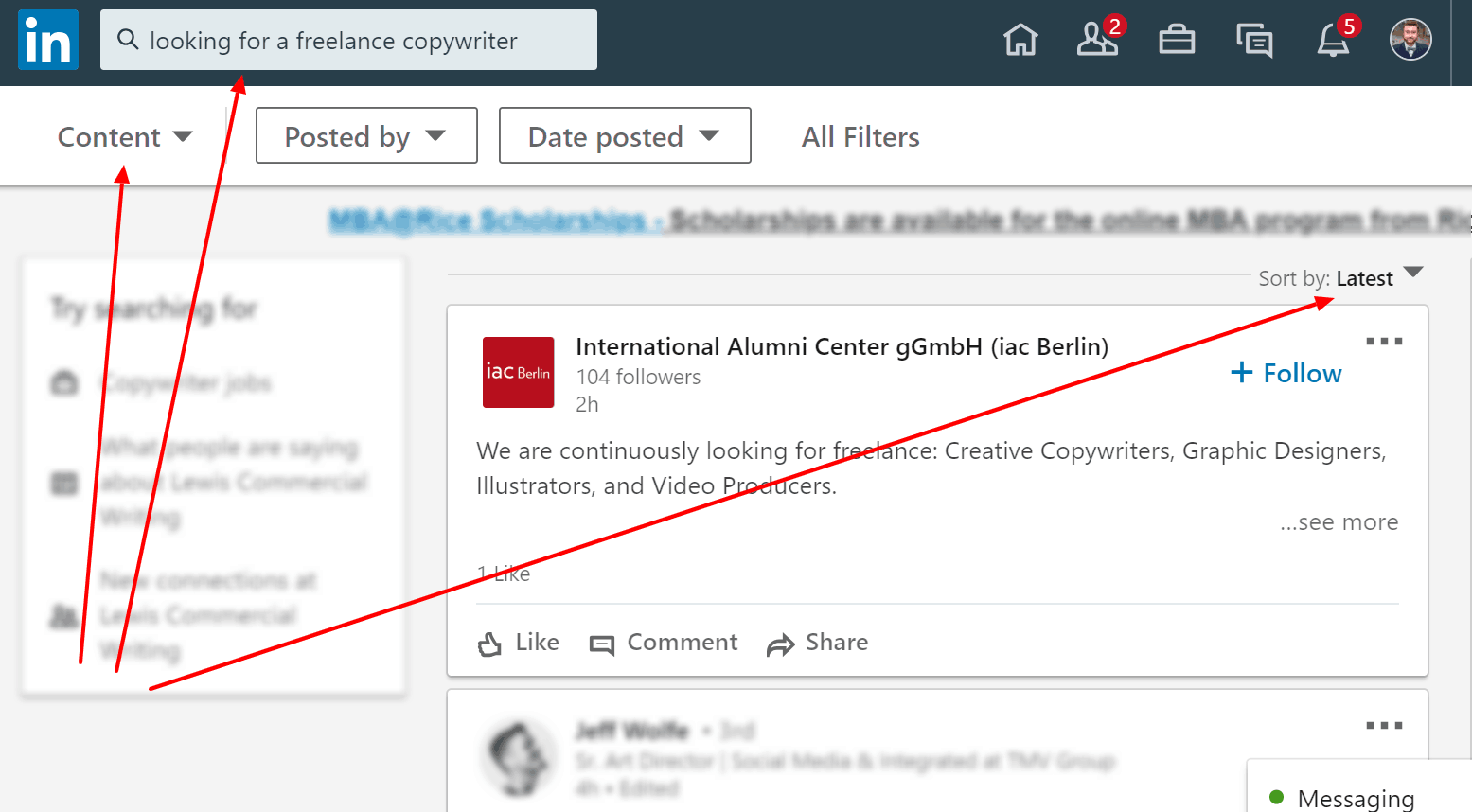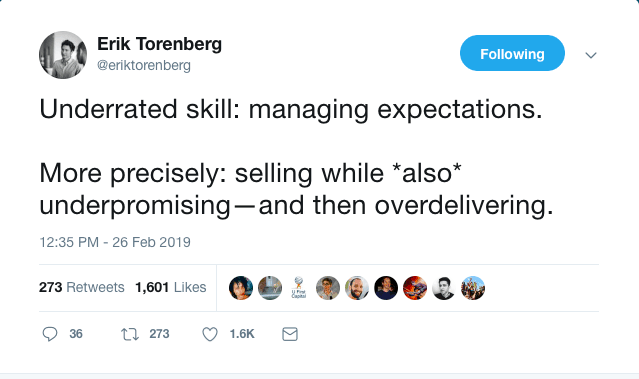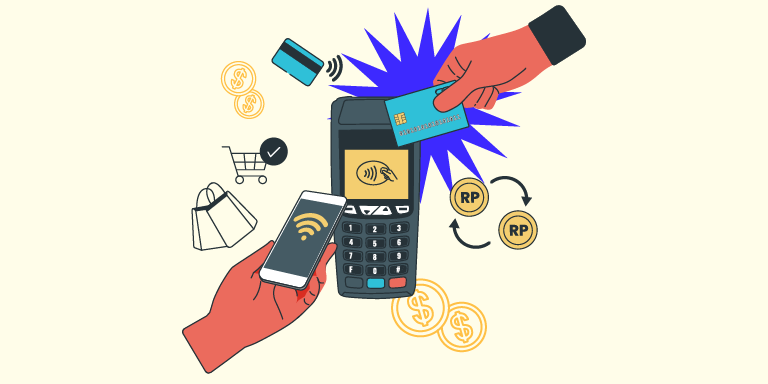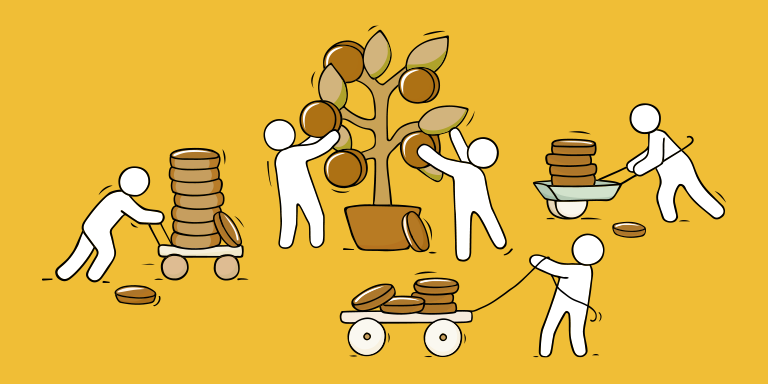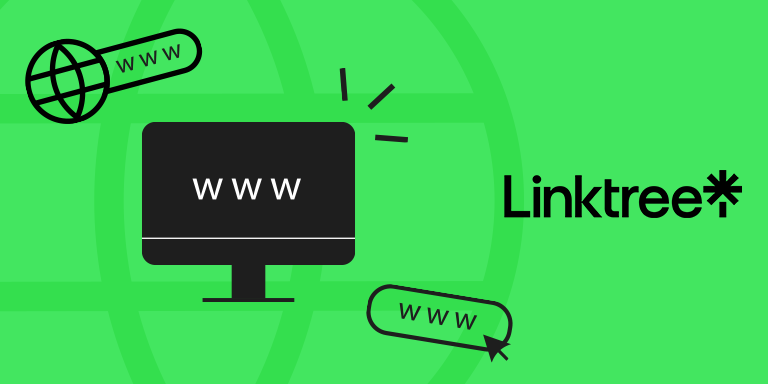Before anyone can enjoy the luxuries of freelancing, they must first endure the cluelessness of being new to this kind of work. The early days of freelancing can be rough. Earning a sustainable living doesn’t happen overnight. It takes hustle to cover basic living expenses while launching a business. Many of us slave away in cubicles, wait tables, or in my case, nearly crush Grammy-winning musicians.
It’s true. Before I got my freelance copywriting business off the ground, I was moonlighting in event logistics to pay my bills. It must have been about 3 a.m. after a show. I was walking backwards, steering 500 lbs or more of speakers on a large four-wheel dolly through the stadium exit. I thought I was being pretty cautious—that is, until I felt a hand press against my back.
“Stop!” the woman demanded.
I threw my body against the speakers, forcing them to a stop within a few feet. I spun around to realize I’d been inches from running over Drake. With his own speakers.
Hauling gear for concerts, it seemed, was not my life’s calling. Fortunately for the safety of the pop musicians of the world, I worked my way through that difficult stage of entrepreneurship, a time when we feel pretty adrift and clueless.
One big milestone in that journey was making my first $1,000, a big breakthrough for most new freelancers. Once I crossed that threshold, it wasn’t long before I had built a sustainable business and was able to leave the day job (or night job, in my case) behind.
If you’ve yet to make your first $1,000, I’m willing to bet that you know how to do the work, but you’re having a hard time finding and winning projects. To help you cross this milestone, we’ve got a fantastic video from King Kong agency founder, Sabri Suby.
Sabri’s going to tell you how to open the client floodgates so you become the go-to freelancer every company wants on their team. He shares some of the mindsets and strategies that he used to take his own consulting practice’s revenue from zero to $10 million in just four years.
After you give that a watch, we’ll spend the rest of this article breaking down some of his points.
What it Really Takes to Make Your First $1,000 Freelancing
Learning how to make your first $1,000 as a freelancer starts with setting realistic expectations. Those first projects and paychecks will require you to get scrappy and step way out of your comfort zone.
In the beginning, you’ll need to supplement your income somehow. Some freelancers hold onto their full-time jobs for a while. Others find temporary side projects like my event logistics work. It may require a lot of help from others just to get your footing.
There’s a learning curve. What “normal” means to you as a freelancer might be the opposite of what you now consider normal in your 9-to-5. Paychecks are irregular and unpredictable, you have to wear all the hats of your business, and you won’t clock in anywhere near 40 hours of billable work most weeks.
But as you learn to embrace this learning curve, you realize freelancing is actually a very simple idea and practice. Freelancers exist to fill in the gaps for businesses. If you can find a business problem you’re fit to solve, you can freelance.
As Sabri Suby points out, freelancing is simply getting “paid to solve problems for people.”
If you’re looking for freelance work, chances are you already know what types of problems you will solve—that’s called your expertise. The learning curve has more to do with finding the people looking for your expertise and then convincing them to hire you. You have to show that their needs are a perfect match for your abilities.
The good news is that freelance work snowballs once you’ve invested enough time. The parts that feel hard at first can eventually become easy and routine. The scrappiness you need now to earn your first projects will eventually get replaced by recurring work, ongoing referrals, and an advertising budget.
But before that luxury comes along, here’s where and how to attract and find freelancing clients:
Where to Find Clients
Starting from scratch, you’re going to be looking at things like Reddit threads, Facebook groups— where congregating. … These clients have problems and are looking for answers. You’re going to step in and start to answer those questions. – Sabri Suby
Sabri stresses that to get your first $1,000 you need to get out there and get in front of potential clients. Where do these people congregate? Where do they look for answers to their problems? It’s your job to find these places, and then step in to start answering their questions for free.
That’s right, he said free.
But Sabri, How can I make my first $1,000 if I am giving away my expertise?
He points out that to stand out from the dozens of other freelancers soliciting the person who’s looking for advice, you must first provide value by helping the person. This can literally just mean answering their question or giving ideas.
By offering free advice, you will earn the prospect’s trust. Once trust is established, the chances of entering a real contract with this person are much higher. They see that you understand their problem and care about helping them solve it.
But where are people asking these topical questions?
When I started freelancing, I thought only a small number of people cared to hire freelancers. I considered it a very specialized and unusual need. With time, I started realizing how in demand freelancing services could be. Often, the need for freelancers far outpaces the number of freelancers in the market.
In other words, there’s plenty of work to do. You might as well be the one to do it.
As you start your search for clients, remember that your skills and interests are in demand somewhere. All you have to do is cross paths with those people.
Here are some shortcuts to ensure you cross paths with the people and businesses who’re looking for your services:
Your Network
It can be scary to start something new. It can be even more intimidating to tell other people about it. Vulnerability is a brave and necessary step to succeeding as a freelancer.
It’ll take courage to tell your network that you’re now a freelancer. But it’s definitely worth doing.
Your personal network can be a great source for initial freelance work. Some of these friends and acquaintances may be more willing to take a chance on you since they already know you. You may not need a robust portfolio or list of referrals to win their business.
Some of my first freelance projects came from friends. I knew the owner of a web development firm as well as the owner of a local advertising agency. The former hired me for a large project and the latter gave me a referral which turned into an ongoing client.
Social Media
When I began freelancing, I wondered why I didn’t have much luck using social media. I scoured the internet for advice on finding clients through social media. Every blog mentioned that places like LinkedIn and Facebook are great resources for finding work, but very few of them actually told me how to do it.
So I won’t skip that actionable part here. Other people and organizations have written about acquiring customers through social media. But I’ll touch on some of my favorite methods.
Let’s start with the obvious way that’s already sort of been mentioned. As you’re learning how to make your first $1,000 freelancing, you can use social media to easily reach out to your friends and professional contacts.
Here are some less-obvious ways to find clients using social media:
Go to the search bar in LinkedIn. Type “looking for a freelance copywriter” (or whatever you do) and then sort the results by Content and Latest, as shown below:
LinkedIn is a treasure trove of freelance opportunities. On almost any given day, I can type searches like the one above to find recent requests for relevant prospects.
Give it a try using terms you think your target audience might use to find your services.
Love it or hate it, more people still use Facebook than any other social media platform. That means it holds many opportunities for freelancers to connect with strong leads.
I’ve had the most luck using Facebook groups. In particular, try to find local Facebook groups that appeal to your target audience. If you create websites for startups, then start by finding out where the startup community networks on Facebook. Do they have a niche group?
It took me almost two years of full-time freelancing to realize there are two large Facebook groups focused exclusively on connecting local Austin businesses to freelancers and remote workers. I’ve used these groups to get more than five projects in the past year.
The surest way to find reliable (and spam-free) groups is to learn about them through personal recommendations. Do you know other freelancers in your town or field? Ask them if they know about relevant Facebook groups in your industry.
If you don’t have those contacts or want additional ways to find these groups, use the Facebook search engine. You may have to vet several groups before you find the best ones, but it’s worth the investigation.
If you’re in the design space, simple content marketing—showing off your design work—can be an effective strategy.
Speaking from personal experience, some of the best luck I’ve had with Instagram has come through cold outreach. Many marketing agencies are on Instagram. You can follow their feeds to see what types of projects and clients they serve. When you find teams who work within your niche, follow them. Start interacting with their posts. After a few weeks of interaction, after their team has likely taken notice of you, send them a DM or email.
It’s helpful to remember that many agencies are understaffed. Outsourcing excess work can be a huge burden off their shoulders. When you cold email the agency, mention that you’re available the next time they have too much work on their plate. You might be surprised by how helpful some agencies find this flexible support.
For you, agency partnerships can become a regular source of fun and diverse work.
As Sabri points out, your future clients may turn to resources like Reddit and Quora to find answers to their problems. Go to these forums with the intent of being helpful, not delivering a hard sell for your skills.
Find where people are confused about something within your expertise. Answer their questions generously—really try to add value. If you provide quality answers, people will see you as an expert, and you may receive queries about freelance work.
Networking
The web has made it easy for many freelancers to never look up from their laptops. But it’s important to remember that there’s a world of great prospects who may never find you online, but who regularly attend events and conferences in your hometown.
Use websites like Eventbrite to learn about local networking events within your field. If you’re a designer, don’t just attend design events. Go where your clients attend. If you design SaaS websites, attend local tech events. If you design for clothing retailers, then network at local retail conferences and trade shows.
Bring business cards, but instead of trying to hand them out, focus on gathering cards from other people. By making an effort to gather business cards, you retain the power to contact leads after the conference. You take responsibility for following up and thus increase the likelihood of receiving an email from people you met at an event.
Remember: It’s easy for people to lose or forget about your business card. It’s much harder for them to ignore your kind follow-up email.
Upwork (and Other Freelance Sites)
There are freelancers who will tell you to avoid talent/freelance sites like they’re political conversations over Christmas dinner. I don’t think these websites have to be as bad as those freelancers say. At the very least, freelancing websites like Upwork, Thumbtack, and Fiverr are a great place to get portfolio material.
With that said, Upwork comes with one distinct pro and con that you should be aware of.
The good and bad of Upwork can be summed up in one sentence: It is an easy platform for finding businesses who need freelance services. Upwork attracts many thousands of businesses and freelancers because it is the go-to project aggregate website.
In practice, this means for any given project, you may be bidding against a lot of freelancers. The competition can be steep, which cuts into your earning potential because there are always people willing to lowball. This means everyone’s price goes down at least a little just to be considered.
My recommendation: Don’t even try offering the lowest price—show your value as a creative or consultant. As Seth Godin puts it, “the problem with the race to the bottom is that you might win.”
As we’ll discuss later, focus your proposal on the value you will add for the client. Make the price almost completely irrelevant to them. Even if you’re 10 times more expensive than the bottom-tier pitch, most businesses won’t care as long as you demonstrate that you can solve their problem.
Ways to Add Value (and Stand Out)
Now that you know where to find your first gigs, here are some ways to make sure you start landing the projects you’re applying for.
Sabri talks about freelancing as finding ways to add value in the marketplace. In your pitch to a new prospect, begin the conversation by giving the person advice, ideas, or even a mock-up of the final deliverable. This shows your ability to understand the problem and your aptitude for solving it.
Here are some ways to think about adding that value:
Define Your Expertise
If you have an expertise, you’re technically an expert. That’s hard for many of us to accept in the beginning. I certainly remember what it was like in those early days. Many beginning freelancers suffer from impostor syndrome to some degree.
If you’re having a hard time identifying as your new role, focus on what you do instead of what you hope to become. Instead of saying, “I’m a copywriting expert,” say “I help businesses write clear, sales-driven copy.” To the client, it communicates the same message: You’re the person who can solve their copywriting problem.
And always remember, just because something comes easily to you, doesn’t mean it is easy for anyone else. Your knowledge, skills, and even your subject-matter interests are a value-add for a client who doesn’t have them.
Don’t be afraid to sell these skills. After all, you’re the expert.
Talk About the Customer More Than You Talk About Yourself
When you bid on projects, look beyond just the deliverables. Think about what problem this project is solving for the business. As an example from my own work, most businesses who say they’re looking for article writers don’t just want articles written. Below the surface, they have an exact outcome in mind: better SEO, case studies, increased authority in their subject matter, etc.
If you think you understand what a business owner is really trying to solve, name the problem in your proposal and then tell the business owner why you are the freelancer with the chops and experience to solve their problem.
As a rule of thumb for cover letters and project pitches, always talk about the client more than you talk about yourself.
Position Yourself as a Problem Solver
To bring it all back around, becoming a successful freelancer means positioning yourself as a niche problem solver. Your skills and knowledge can be used to save someone else time, money, and energy.
It may sound like freelancing is more complicated than that when you’re just starting out. But when you break freelancing down to its simplest form, you’re just offering a skill to people and businesses who are willing to pay for it.
Conclusion: Always Deliver More Than You Promise
Once you start landing projects, it’s only a matter of time before you cross that $1,000 threshold. And now that you know how to make your first $1,000 freelancing, your next focus should be retaining those clients. That means earning their continued business and referrals.
The key to earning this continuous work: Deliver greater value than you promised.
You’ve likely heard this said another way: underpromise and overdeliver. You want to build a reputation for being an enormous value-add, and with time, you’ll create a booming freelance business that drives more leads than you can possibly handle on your own.
That’s when you get to choose the projects you work on and the businesses you get to work with. Is there any higher achievement for a freelancer?
Maybe not. But it all starts with earning that first $1,000.
How have you found new freelance projects lately? Discuss with us in the comments!

